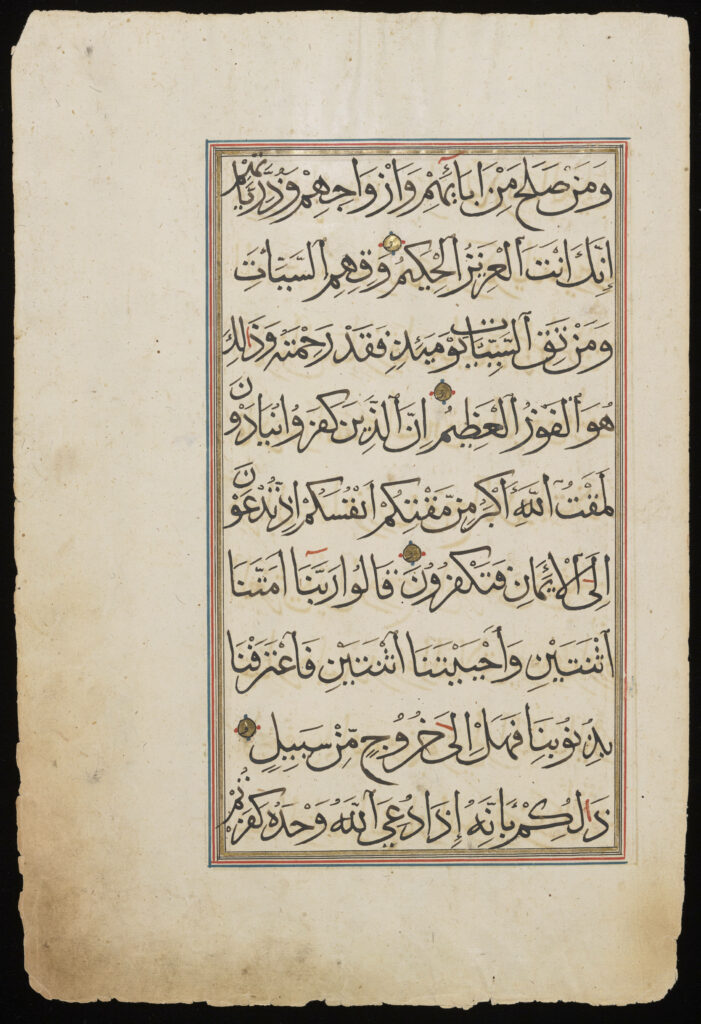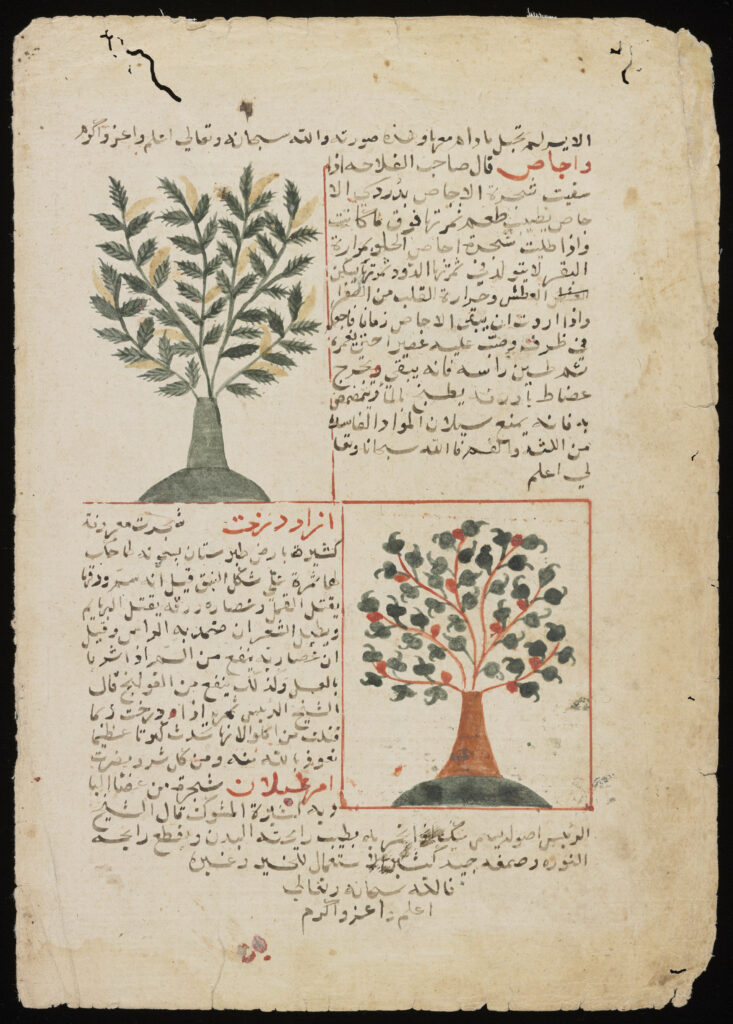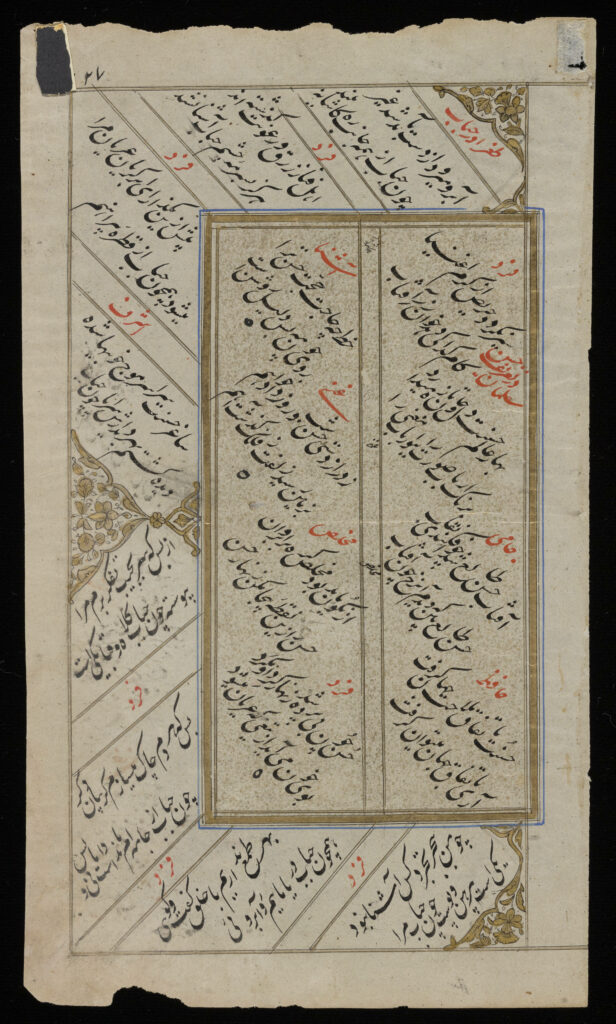By Mina Sadeghzadeh, ’24 Master of Art History, Rare Books Graduate Assistant, Mahn Center for Archives & Special Collections
This semester, I had the great opportunity to be a graduate assistant at the Mahn Center for Archives and Special Collections under the guidance of Dr. Miriam Intrator. I specifically worked with the Special Collection in the Rare Books department. As an international Iranian student majoring in art history, it was a wonderful position for me to work with the Persian and Arabic manuscript materials dating from the 13th to the 18th centuries. I felt like as I know the language, culture, and artistic terms related to Persian calligraphy and with my knowledge about poetry, I was able to accomplish something different and special for the Libraries. Therefore, I created a digital exhibit as a timeline showcasing Persian poetry manuscript leaves (or pages) from our collection in the library: Persian Poetry Manuscripts: A Journey Through Time.

In the beginning, when Dr. Intrator showed me the Persian and Arabic materials, I could hardly stop my tears, as I am unsure if I will have the opportunity to return to Iran due to the political situation. I felt blessed to work with a collection tied to my country and its rich culture in poetry and calligraphy. I created a spreadsheet with the information available in the Digital Archives about these materials. I began correcting and adding more details such as the names of authors or calligraphers, dates, and locations. As I mentioned, these materials represent classical literature in Iran and even for Persian native speakers like myself, it is challenging to find information. However, with exploration on various library websites and my knowledge as an art historian, I tried to correct and enhance the Libraries’ description of these materials.

I learned a lot and it was very beneficial experience for me. I had not worked with an Excel spreadsheet before, and now I understand its usefulness, especially when storing and analyzing a large amount of information. Gathering information becomes more accessible using this system. Also, with the generous help of Erin Wilson, Digital Imaging Specialist & Lab Manager, I learned how to create an online timeline exhibition, make a spreadsheet for it, write image descriptions, and use multimedia like images, sounds, and different word formats to make it appealing for audiences. These experiences will be valuable for me in the future as an art curator.
Moreover, due to the lack of information and sources for Persian manuscripts, I explored many museums, libraries, articles, and used the ALICE catalog to gather information. This exploration helped me become familiar with more resources in Islamic art and learn more about the terminology of this special area in art.
As a first step, I checked author and illustrator names for accuracy. It was not easy, as the Persian script used on these manuscripts was Nasta’liq, making it difficult to decipher and recognize words. Additionally, the words and poems are a very classical, old Persian. Nevertheless I tried to read and search each leaf on Persian websites, finding most of them on ganjoor, a Persian website, where you can search for the name of the poets and the title of their works. I also added their names in Persian to my spreadsheet. I hope this can someday benefit not only the Persian-speaking community but also contribute to a more diverse and inclusive library and research environment.

After the first step of finding names and checking their spelling and accuracy, which was the most difficult step, I tried to gather additional information like dates, locations, and summarizing the whole content of each folio into English. For Quranic leaves, I searched two or three sentences (Aye) on Google and found the name of each chapter (Surah).
My favorite part of this project was the online timeline exhibition. In this exhibition, I focused on leaves that included Persian poems from the 16th to the 18th century to explore the evolution of Persian calligraphy, composition, color, and iconography over time. I tried to explain each leaf’s Persian/Islamic calligraphy and miniature illustration with the proper terminology and style for those interested in this particular art period and area. Also, because this exhibition is about classical Persian literature, I added traditional Persian music to make it more enjoyable for those interested in exploring this rich culture in history. None of these achievements would have been possible without the generous guidance provided by Dr. Miriam Intrator and the entire Mahn Center staff, who warmly supported my efforts.